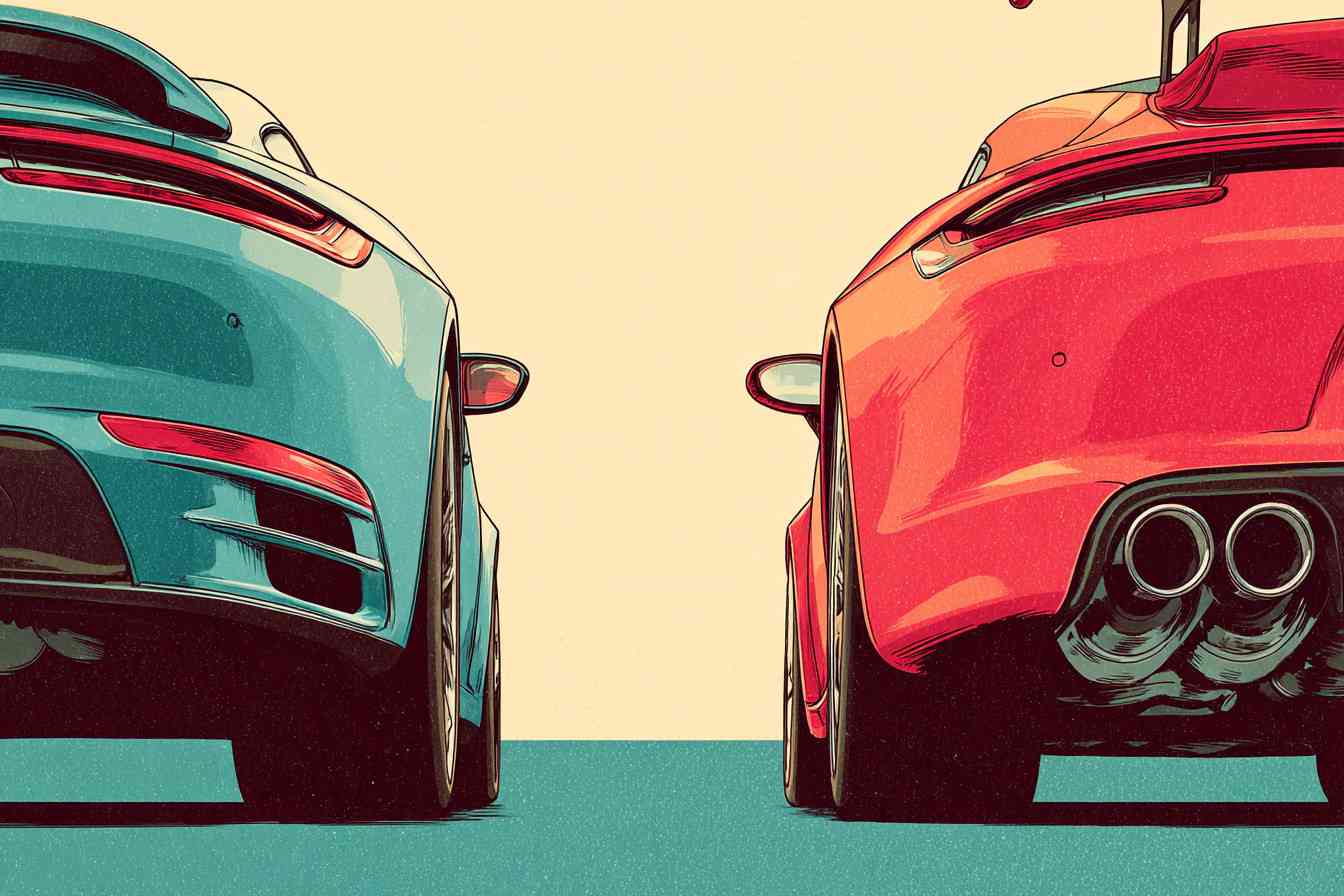Why petrol cars still leave EVs behind

The hyped image of an electric future
Over the past decade, the electric car has been presented as the ultimate solution to climate change and air pollution. Governments are investing billions in subsidies and infrastructure, car manufacturers are being forced by regulations and fines to electrify production, and the media portray electric vehicles (EVs) as the inevitable transport of the future. Yet a critical analysis shows that this image is based more on political choices and marketing than on a balanced comparison of technologies.
Electric vehicles have structural limitations that are often ignored: their range, high purchase cost, dependence on raw materials, and strain on the electricity grid. Meanwhile, petrol cars have improved significantly over the past decades, both in efficiency and environmental performance. The internal combustion engine has not stood still, but has evolved into a reliable, efficient, and increasingly cleaner technology. The idea that petrol cars are relics of the past is therefore increasingly misleading.
A historical perspective: the forgotten electric car
The idea of electric mobility is not new. At the end of the 19th century, electric vehicles were already operating in Europe and the United States. Around 1900, they were even more popular in cities than petrol cars, because they were quieter and did not require manual cranking to start. However, their limited range and long charging time made them unsuitable for longer trips. When internal combustion engines became more reliable and affordable, the electric car quickly lost ground (The Electric Vehicle and the Burden of History, David A. Kirsch).
History is repeating itself today. Even now, EVs face the same fundamental problems: range, charging time, and cost. Despite modern technology and billions of investment, there is still no solution that consistently outperforms petrol cars on all fronts.
Range and practical usability
One of the greatest advantages of petrol cars is their range. With a full tank, modern vehicles often drive 600 to 800 kilometers, and some models even more. Refueling takes only a few minutes. For many drivers, this is taken for granted, but for EVs it remains a major obstacle.
Although some luxury EVs, such as the Tesla Model S or Mercedes EQS, claim a range of 500 to 600 kilometers, in practice these figures are rarely achieved. Weather conditions, high speed, air conditioning or heating can significantly reduce the range (Why Electric Cars Struggle in Cold Weather, Forbes). In cold climates, the range can drop by up to 40%. For winter trips or long-distance drivers, this is a serious limitation.
Charging also takes far longer than refueling. Even at fast-charging stations, it often takes at least 30 minutes to reach 80% battery capacity. At standard charging points, this can take hours. For those who drive long distances daily or frequently go on vacation by car, this is a major inconvenience. Petrol cars offer the freedom of quick mobility without planning or waiting.
Infrastructure and grid capacity
The infrastructure for petrol and diesel is robust and globally available. There are millions of gas stations, strategically placed along highways, towns, and cities. This infrastructure has been developed over more than a century and has proven reliable.
For EVs, the situation is different. In Europe and the US, charging networks are expanding, but capacity remains limited. Fast chargers are scarce and often occupied, leading to queues. In cities, residents often compete for street charging spots. Moreover, most older homes are not equipped with private chargers.
There is also a more fundamental problem: the capacity of the electricity grid. In the Netherlands, grid operators warn that the current network is insufficient for mass EV charging (Netbeheer Nederland: risico op stroomtekort bij grootschalige elektrificatie, Trouw). If everyone plugs in their cars in the evening, overload is possible. Petrol engines do not face this problem; fuel logistics are efficient and independent of the electricity grid.
Costs: the expensive illusion of cheap mobility
Supporters of EVs often emphasize lower operating costs: electricity is cheaper than petrol, and maintenance is simpler. However, this is misleading. Electric cars are generally more expensive to purchase, often tens of thousands more than a comparable petrol vehicle. Subsidies mask this price difference, but are paid for with taxes and often benefit higher-income households (Electric Vehicle Subsidies Are Failing the Poor, The Guardian).
Real operating costs are often underestimated. Fast charging on the road is significantly more expensive than home charging and in many cases more expensive than petrol. Battery replacement can cost between 10, 000 and 20, 000 euros, depending on the model (The Cost of Replacing an Electric Car Battery, Car and Driver). Petrol cars rarely incur repairs of such magnitude and require maintenance less often.
The second-hand market is also risky for EVs. Depreciation is high due to uncertainty about battery degradation. Petrol cars, on the other hand, maintain stable second-hand value because their lifespan and maintenance costs are predictable.
Environmental impact: the problem relocated
The strongest selling point of EVs is their perceived environmental friendliness. They are often described as “zero emission.” In reality, emissions are merely shifted from the exhaust to electricity generation and the mining of raw materials. In countries where electricity comes largely from coal or gas, the carbon footprint of an EV is barely better than that of a petrol car (Global EV Outlook, IEA).
Battery production is particularly environmentally intensive. Research by the IVL Swedish Environmental Research Institute showed that producing an average lithium-ion battery already causes emissions equivalent to tens of thousands of kilometers driven by a petrol car (The Life Cycle Energy Consumption and Greenhouse Gas Emissions from Lithium-Ion Batteries, IVL). Only after years of intensive use would an EV theoretically become more environmentally friendly, but in practice many vehicles do not reach that lifespan.
Ethical issues also play a role. Cobalt mining in Congo often involves child labor and dangerous working conditions (Cobalt Red, Siddharth Kara). The green promise of EVs therefore conceals other forms of pollution and exploitation.
The overlooked progress of petrol cars
A key point often overlooked is that petrol cars have made enormous progress over the past decades. While internal combustion engines were notorious for emissions in the 1970s and 1980s, today they are much cleaner and more efficient.
Important innovations include:
- Catalytic converters and particulate filters: drastically reduce harmful substances like nitrogen oxides and fine particles.
- Direct fuel injection and variable valve timing: more efficient combustion, less waste.
- Turbo-downsizing: smaller engines delivering high power with lower fuel consumption.
- Start-stop systems and mild hybrid support: reduced fuel consumption in city traffic.
- Lightweight materials and aerodynamic design: lower resistance and consumption.
According to ADAC, modern petrol cars emit up to 99% fewer pollutants than their predecessors from a few decades ago (ADAC EcoTest, ADAC). Strict European emission standards (Euro 1 to Euro 6) have significantly improved urban air quality. The notion that only EVs are “clean” is therefore a simplification that ignores the technological evolution of petrol engines.
Reliability and repair options
Reliability is another area where petrol cars excel. They have a global network of garages and parts, making repairs straightforward and affordable. The technology is proven, and mechanics are well-trained.
EVs, in contrast, rely heavily on complex software and expensive battery packs. Issues with charging software, battery malfunctions, or long repair times are common (Tesla Owners Face Long Waits for Repairs, Wall Street Journal). Because the technology is relatively new, competition in the repair market is limited, keeping costs high.
For the average driver, this means that petrol cars are not only cheaper and more practical, but also carry fewer risks in case of breakdowns or maintenance needs.
International case studies: Norway, Germany, the US, and China
Norway: the experimental laboratory
Norway is often presented as a successful model for EV adoption. More than half of new cars sold are electric. However, this is largely due to extremely high subsidies and tax benefits. Without these incentives, EVs in Norway would also be unaffordable (Norway’s Electric Car Incentives: Too Good to Last?, Financial Times). Norway is also exceptional due to its abundant hydropower, which makes electricity relatively clean. Replicating this model in other countries is difficult.
Germany: the critical driver
In Germany, where cars are central to national culture, the shift to EVs has been slower. ADAC studies show that many drivers stick with petrol or diesel due to range, reliability, and cost (ADAC Umfrage zu Elektromobilität, ADAC). Even with subsidies, interest remains limited, especially outside cities.
United States: the land of long distances
In the US, pick-ups and SUVs dominate, usually with powerful petrol or diesel engines. EVs struggle to gain a foothold, as long distances and heavy loads are not compatible with electric drive. Infrastructure outside cities is limited. Manufacturers such as Ford and GM face disappointing sales of their electric models (Why Electric Pickup Sales Are Slowing Down, Bloomberg).
China: the battery powerhouse
China is the world’s largest producer of EVs and batteries. This position is largely due to massive state support and a tightly controlled economy. Many Chinese EVs are cheap but of low quality and barely exportable. At the same time, China’s geopolitical influence grows as it dominates critical mineral production (The New Energy War: China and the West Battle Over Lithium, Financial Times). Rather than achieving independence, the EV transition creates new dependencies.
The geopolitical dimension
Switching to electric mobility changes the geopolitical map. While oil has always been a major factor, minerals such as lithium, cobalt, and nickel are now the new point of contention. These materials are concentrated in politically unstable regions or controlled by China, creating new dependencies that can be just as problematic as oil dependence.
Oil is widely available globally, with multiple suppliers and a proven logistics system. Dependence on a few critical minerals, on the other hand, makes EVs vulnerable to price spikes, scarcity, and geopolitical tensions.
The role of subsidies and regulations
Without subsidies and regulations, EVs would never have achieved their current prominence. Car manufacturers are heavily fined if CO₂ emissions are too high and are thus forced to shift production toward electric vehicles (Why Carmakers Are Forced to Go Electric, Der Spiegel). This is not a free market, but a politically driven experiment.
For consumers, EVs are made attractive by fiscal incentives, such as lower taxes, free parking, or purchase subsidies. This support is artificial: once these benefits disappear, demand will drop sharply. Petrol cars do not rely on artificial support; their value comes from practical usability and affordability.
Conclusion: the underestimated champion
While the electric car is often called the future, reality shows that the petrol car remains the most versatile, reliable, and affordable option for the majority of people. EVs face structural problems: high costs, limited range, dependence on scarce minerals, and a stressed electricity grid. In contrast, petrol cars continue to evolve, becoming cleaner, more efficient, and increasingly reliable.
Looking beyond the hype, it is clear that petrol cars are far from obsolete. They are a technology that has proven itself for more than a century, continues to adapt, and remains the only realistic option for millions. Unlike the overhyped expectations surrounding EVs, the petrol car remains the underestimated champion.


















